富士山
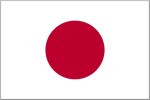
Symbol of Japan, dormant volcano and the country’s highest peak

Mount Fuji, known in Japanese as Fujisan or Fujiyama (both of which mean the same thing) is easily one of the most potent icons of Japan. It is the highest mountain in the country, a pleasingly symmetrical cone-shaped volcano, and is still considered to be active. At 3,776 metres or 12,388 feet from top to toe, and with the bus taking you halfway up, it is well within the grasp of the averagely fit Sunday climber.
Climbing Mount Fuji is one of those traveller rites-of-passage (along with Peru’s Inca Trail and tubing in Laos), so naturally while in Japan we had to give it a go. A staggering two hundred thousand punters plod up to the summit each year, and even more incredibly this is during the climbing season which runs only in July and August. Officially the mountain was closed when we showed up in late September, but that didn’t stop us.
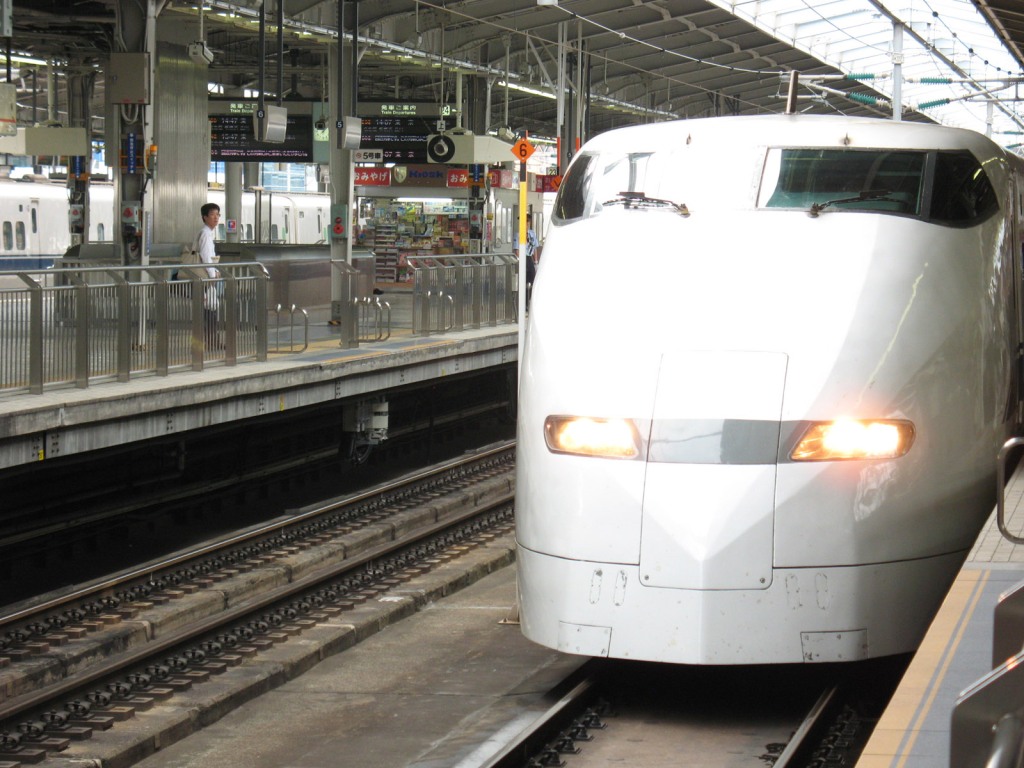
In order to get to that most famous icon of Japan, we made use of another – the bullet train, or Shinkansen. Pelting along at nearly 200 miles per hour it’s possible to traverse much of Japan in a very short space of time. Our rail passes served us well.
The iconic nature of both our wheels and our quarry were summarised in the plaque at the end of the carriage.

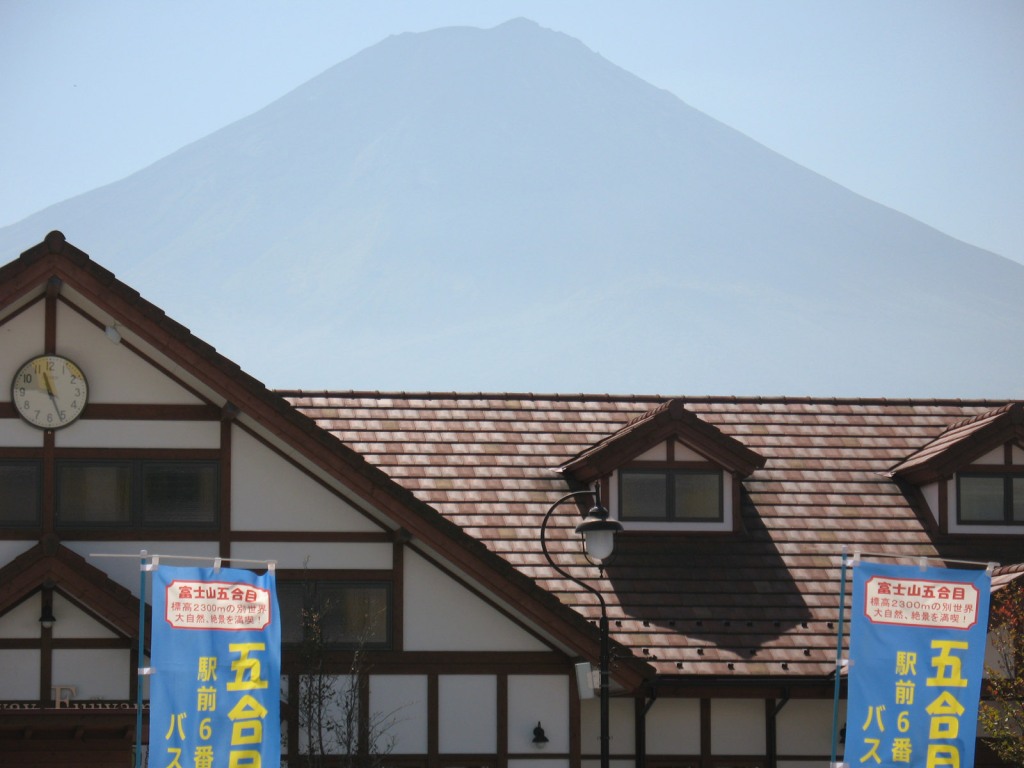
We spent the night in the town of Kawaguchi-ko, at the base of the northern slopes of the mountain. Our hostel was allergy-central, I had a terrible night’s sleep for continual sneezing, so wasn’t feeling my best when faced with this magnificent sight to climb.
We set off up the Yoshida trail from its fifth station, which was as far as the bus would take us. Vertical ascent from there was over a mile. It wasn’t exactly getting back to nature however, as the path was lined with bunkhouses and shops. With the mountain being “closed” there were only two shops open, which is still far better service than any Munro-bagging one might do in Scotland.

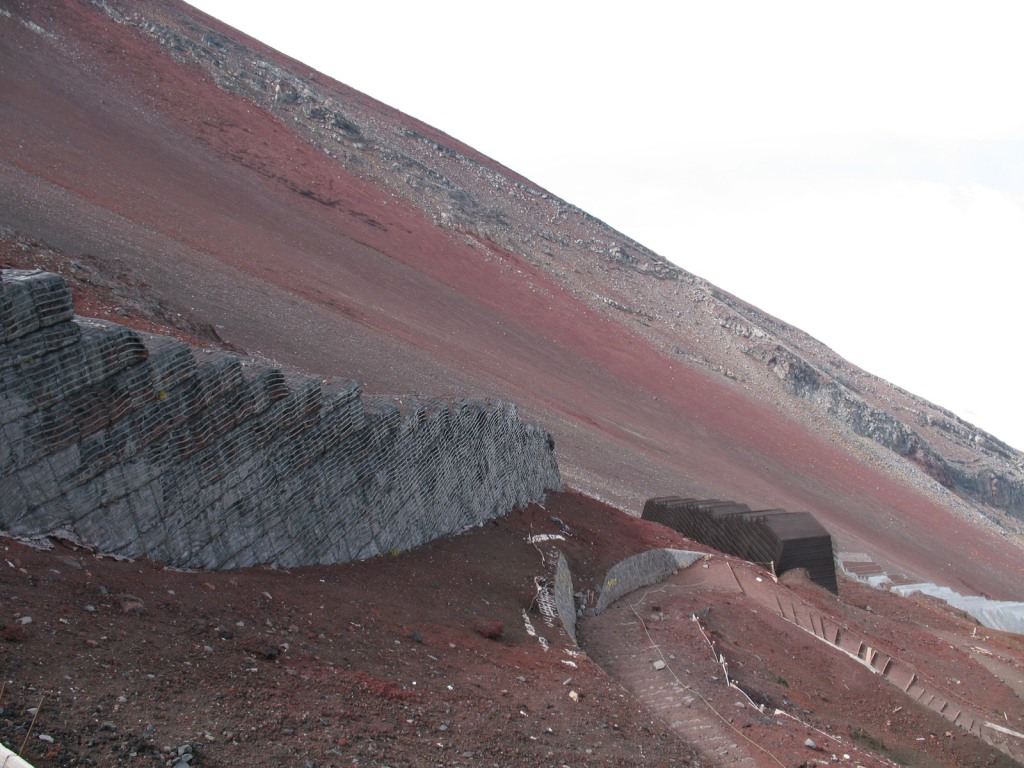
The lava scree of the slopes of Mount Fuji – with every step forward you’d slide back just that little bit too. The higher you climb, the steeper it gets.
A red torii in the sky – traditional Japanese gateway which was one of a couple we passed through on our ascent.
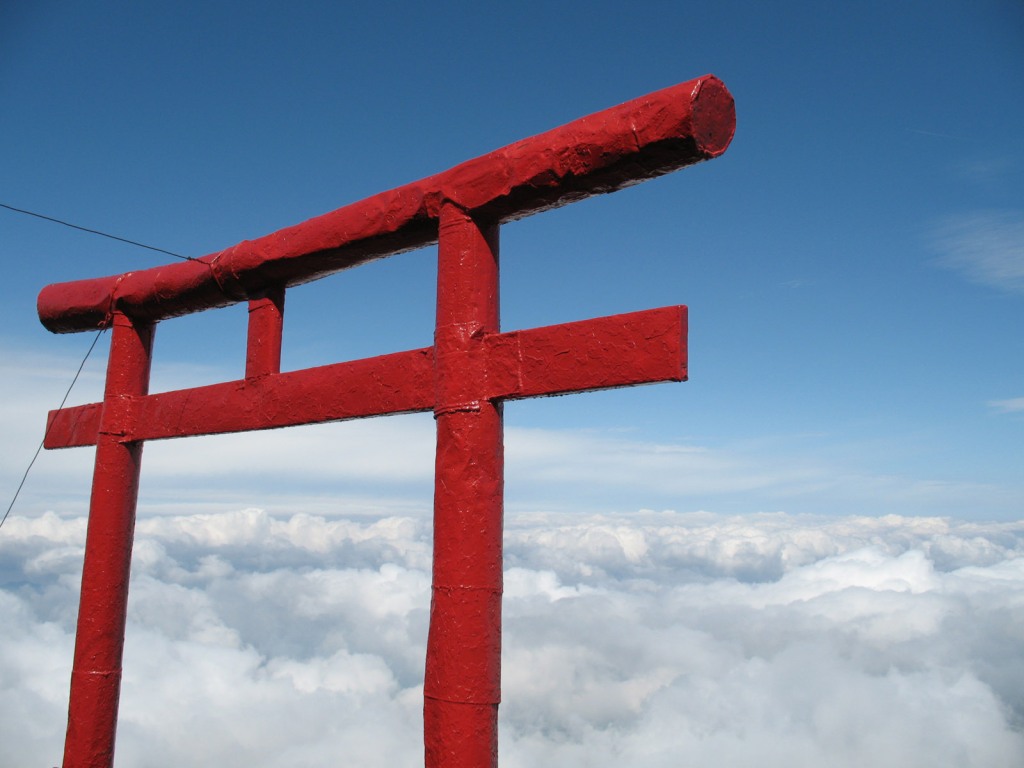
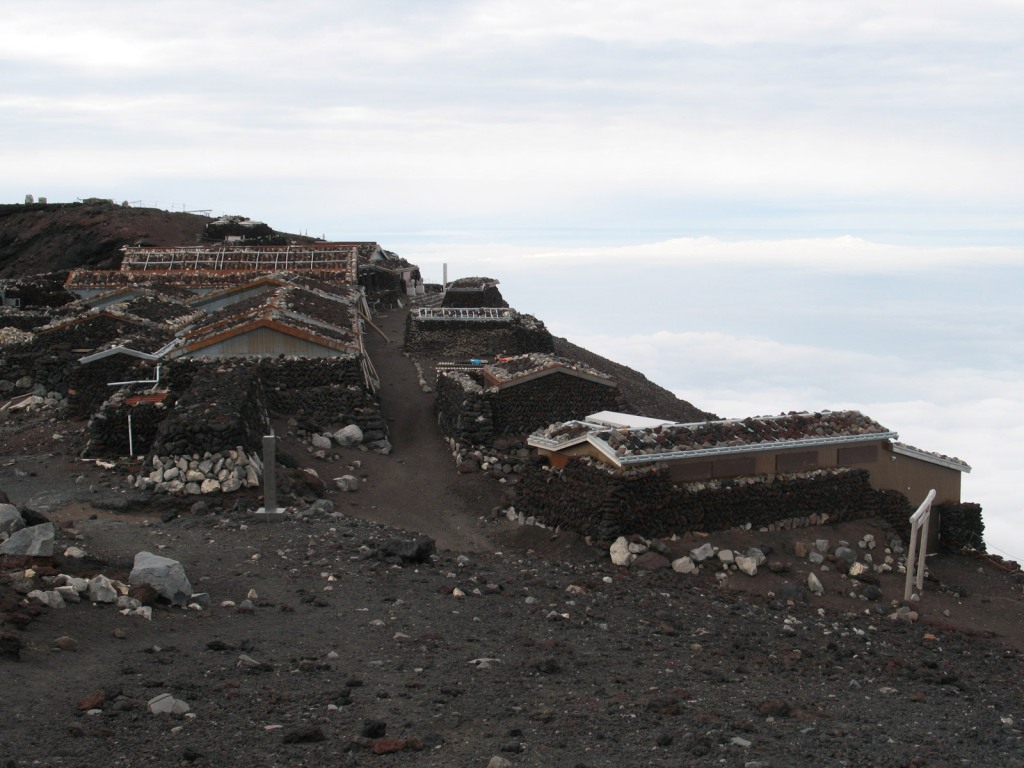
We reached the crater rim about three hours after setting out. Apparently the usual time is over six hours to do this – not because it’s hard and we’re fit (we are decidedly not!) but simply due to the volume of people vying to get to the summit. A final series of bunkhouses and shops line the crater rim.
The crater itself. No pools of bubbling lava unfortunately, but you still wouldn’t want to go down there as it looks mighty tricky to get back out again. Fuji last erupted in 1707, covering Tokyo with ash, and there is no reason for it not to do so again some time.
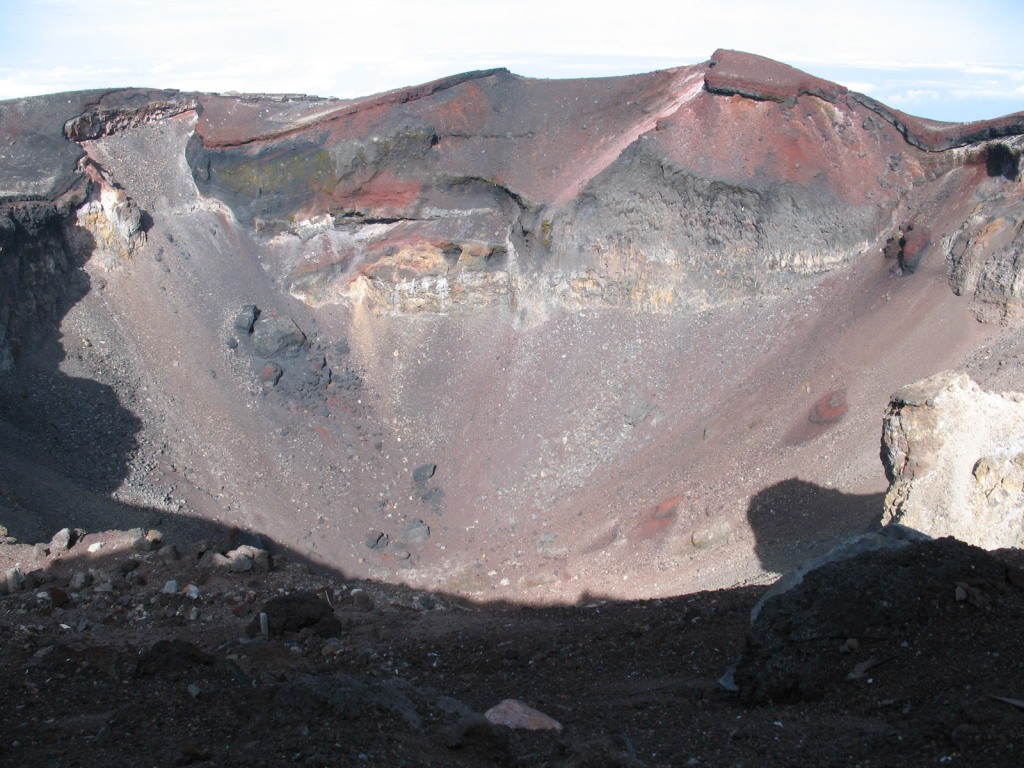
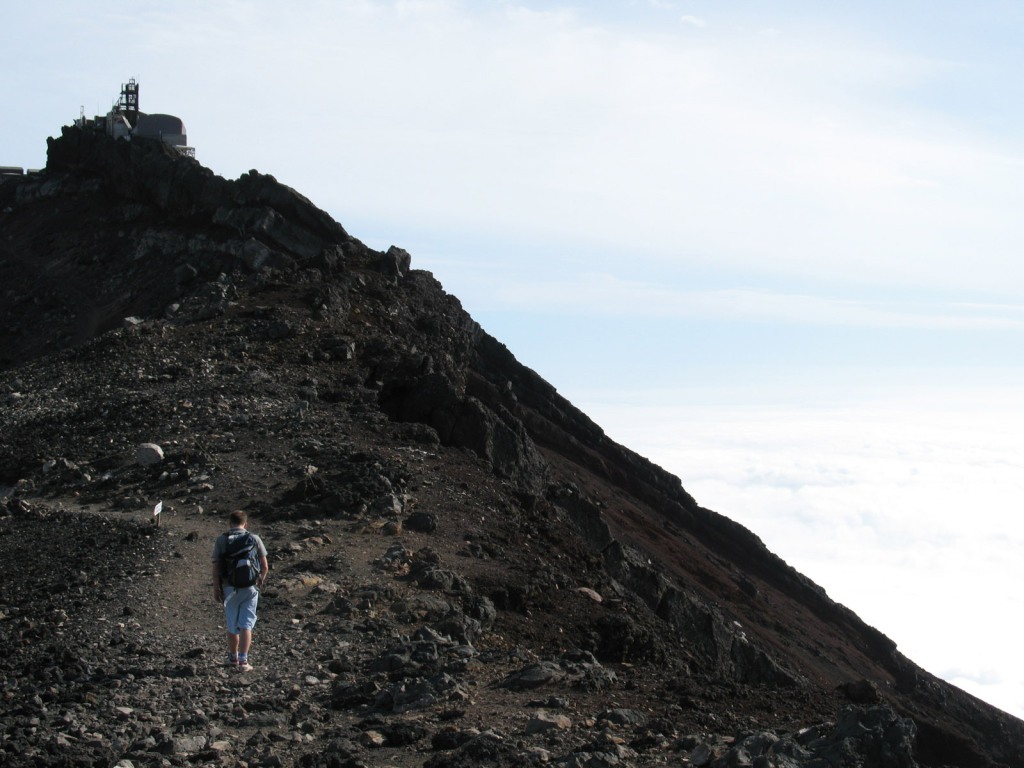
We circumnavigated the entire crater, stopping off at the summit proper at the opposite side to the Yoshida trail. I hadn’t expected the altitude to affect me so much, it was fine going along flat but barely a few steps up a slope and I was knackered.
This was what we came for – the roof of Japan. An amazing feeling to stand up here, with the kind of view you’d usually only get from an aeroplane. The weather was certainly on our side, I only needed one layer all day.

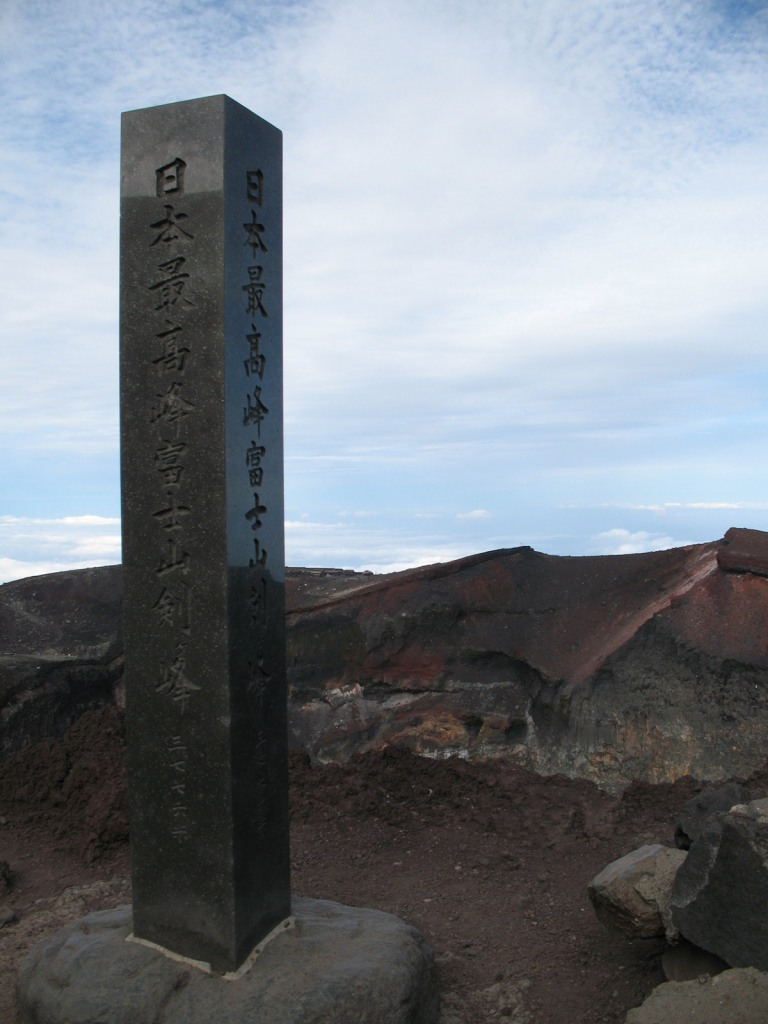
A granite post next to the weather station at the summit. I don’t know what it says, but for the first two characters which are “Nippon”, or Japan. I always read them as “RiBen” though, since my time in China.
Back on the bullet, and there were some great views of the mountain to be had the next day as we rocketed along to Nagoya.
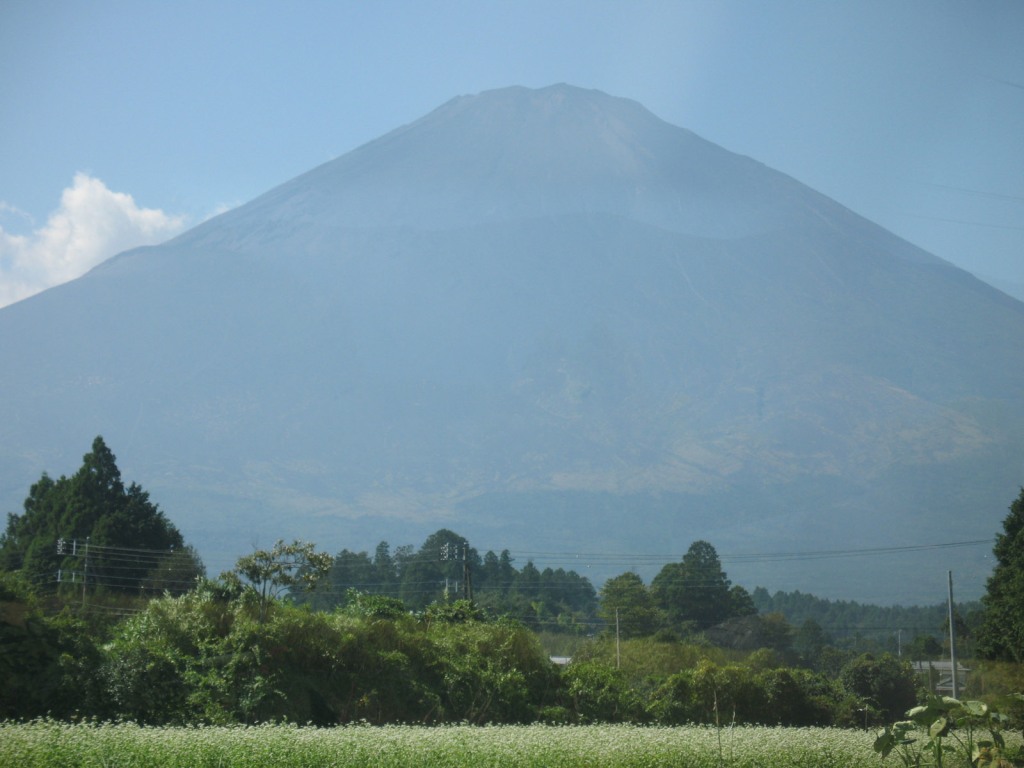
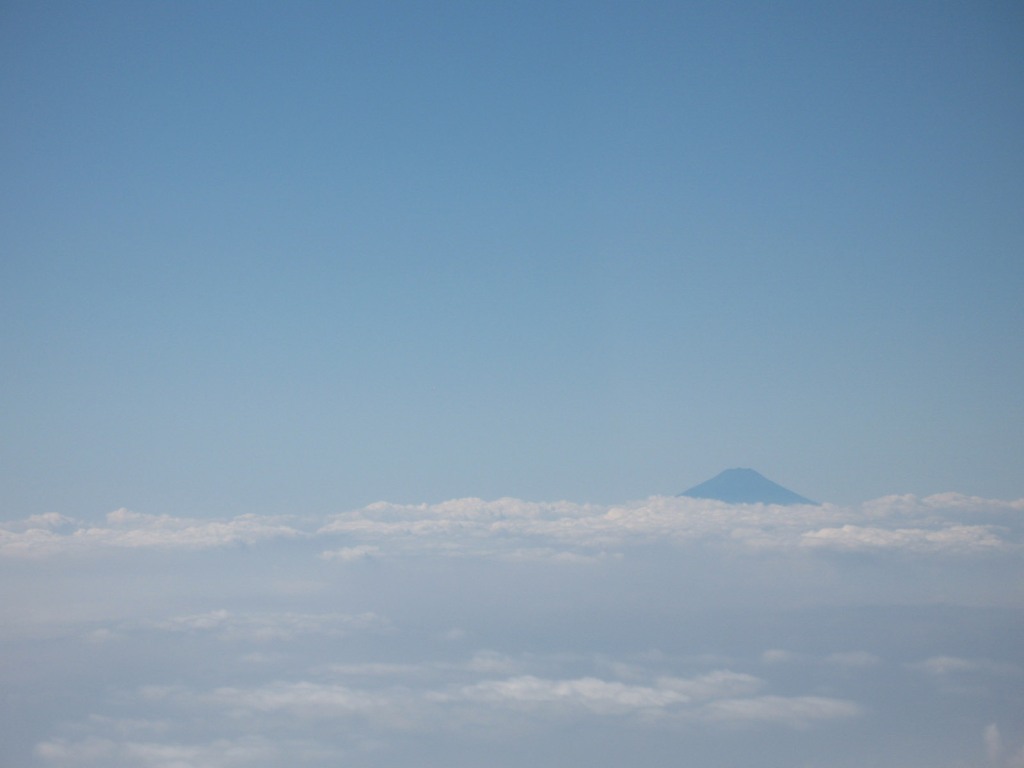
My final view of Mount Fuji was more than a week later, shortly after take-off from Tokyo’s Narita airport to head back home to London. It was a very satisfying feeling to look at that great cinder cone and know that I’d stood on its summit not ten days earlier.
Created 2010
